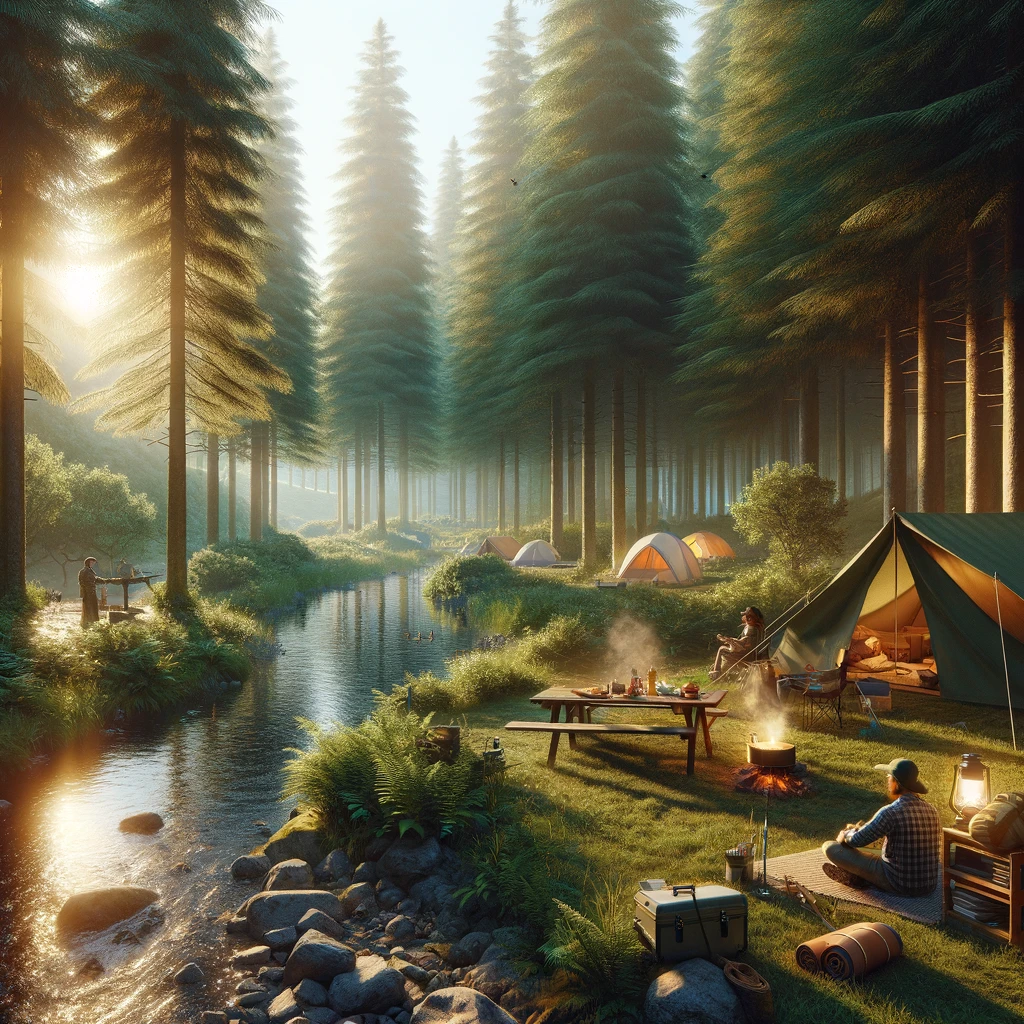Car camping offers an outstanding balance between outdoor adventure and comfort. However, selecting a suitable campsite can make or break your experience. Here are some essential tips to help you choose the perfect car camping site:
Research and Plan Ahead
Thorough research and planning are crucial before embarking on your car camping adventure. Utilize online resources and apps like The Dyrt, Hipcamp, or Recreation.gov to find and reserve campsites. These platforms often provide detailed information about each site, including amenities, accessibility, and availability.
Reading reviews from other campers can offer valuable insights about the site’s conditions and amenities. Pay attention to recent reviews, which will give you the most up-to-date information. Don’t forget to check the campground’s rules and regulations, including fire restrictions and pet policies. This information is vital for ensuring a smooth and enjoyable camping experience.
Consider the Location
The location of your campsite can significantly impact your overall experience. Choose a site that’s close to the activities you want to do, such as hiking trails or fishing spots. This proximity will allow you to make the most of your time outdoors without spending too much time traveling between your campsite and your activities.
Look for sites with natural features like shade trees or scenic views. These elements can enhance your camping experience and provide natural protection from the elements. However, remember to camp at least 200 feet away from lakes and streams to minimize your impact on these sensitive ecosystems.
Assess the Terrain
When finding free and legal car camping spots, it’s crucial to assess the terrain carefully. Look for a level spot to park your car and set up your tent. A flat surface will ensure a comfortable sleep and prevent your gear from rolling away.
Avoid low-lying areas that could flood in case of rain. Water can accumulate quickly in these areas, potentially damaging your equipment and making for an uncomfortable night. Also, check for hazards like dead trees or loose rocks that could pose a safety risk during your stay.
Evaluate the Size and Layout
Ensure the site is large enough for your vehicle, tent, and additional gear. A cramped campsite can make for a frustrating experience. Look for sites with a good separation between parking and living/sleeping areas. This separation can help create a more organized and enjoyable camping space.
Consider privacy when choosing your site. Opt for a spot with natural barriers like trees or bushes if possible. This can help create a more secluded and peaceful camping experience, especially in busier campgrounds.
Check for Amenities
Depending on your camping style and needs, amenities can be crucial to your site selection. Determine if you need access to facilities like restrooms, showers, or potable water. These amenities can significantly enhance your comfort, especially for more extended stays.
Check if there are picnic tables, fire rings, or grills available. These features can make meal preparation and outdoor dining much more convenient. If you’re planning to work remotely or need to stay connected, consider if you need electrical hookups or cell phone reception.
Be Mindful of the Weather
Weather conditions can significantly impact your camping experience. When selecting a site, choose spots with natural windbreaks in windy areas. Look for shade in hot weather, while sun exposure might be preferable in cooler weather.
Consider how the site might fare in case of rain or other weather events. This is particularly important when navigating bad weather while car camping. A site with good drainage and some natural shelter can make a big difference in challenging weather conditions.
Respect Wildlife and Nature
Choose established campsites to minimize your impact on the environment. These areas are designed to withstand regular use and help preserve the surrounding nature. Be aware of local wildlife and take necessary precautions, such as proper food storage in bear country.
Always follow Leave No Trace principles to preserve the natural environment. This includes packing out all trash, minimizing campfire impacts, and respecting wildlife.
Consider Accessibility
Ensure your vehicle can safely access the site, especially if you’re driving a larger vehicle or towing a trailer. Check road conditions and any potential obstacles before committing to a site. A beautiful campsite isn’t worth much if you can’t safely reach it.
Think About Timing
Popular campgrounds can fill up quickly, especially during peak seasons. Book in advance when possible to secure your preferred site. If you’re looking for a quieter experience and better site selection, consider visiting during off-peak times.
Have a Backup Plan
Always have alternative sites in mind in case your first choice is unavailable or unsuitable. Conditions can change, and having a Plan B (and C) can save your trip from disappointment. Be prepared to adapt if conditions aren’t as expected.
Conclusion
The perfect car camping site balances comfort, convenience, and connection with nature. By considering these factors, you’ll be well on your way to finding an ideal spot for your outdoor adventure.

Leave a Reply